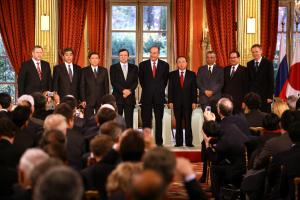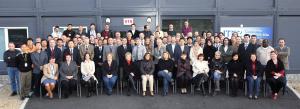The project has come a long and hard way since the Geneva Summit, during which President Reagan and General Secretary Gorbachev advocated for "the widest practicable development of international cooperation" in obtaining fusion energy "for the benefit of all mankind."
Seventeen years would elapse before agreeing on a final design for the machine, and four more to decide where to build the installation. On 28 June 2005, the seven members of the Project
unanimously agreed on the site proposed by Europe, a 180-hectare stretch of land adjacent to one of France's largest nuclear research centres, and close to the small Provençal village of Saint-Paul-lez-Durance.
Now came the time to formally establish the legal international entity that would tackle the huge task of organizing and supervising the construction of the ITER installation.
Because France was the "Host State" to the project, the
ITER Agreement was signed at the Elysée Palace in Paris. On 21 November 2006, high-level representatives from all the participating Members gathered under the gilded ceilings of the presidential palace to append their signature to the 34-page document.
President Chirac of France praised the "unprecedented association of seven major partners [...] extending their hand to the future generations in the name of solidarity and responsibility."



